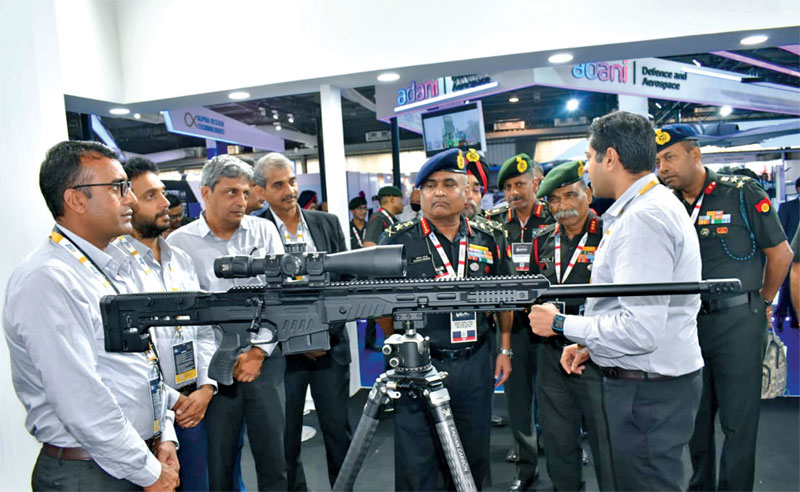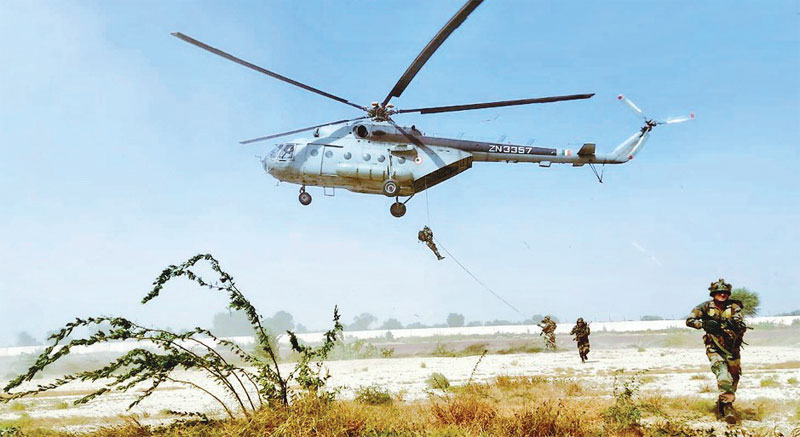Indigenously developed equipment will remain with Indian armed forces for next 30-40 years
Atul Chandra
The Indian Army and indeed the rest of the Indian armed forces continue to be largely dependent on their existing inventory of Russian platforms. A large part of the reason for the continued and crippling dependence on Russian platforms is the delay in military modernisation of systems, which has often taken decades (if at all) and the comfort of continuing defence trade with Russia. According to a 2020 working paper by the Stimson Center, 70-85 per cent of India's military platforms remain of Russian origin.

The Indian Army has over 5,000 Russian Main Battle Tanks (MBT) and BMP-II Infantry Combat Vehicles (ICV), in the T-90, T-72 and the BMP-II ICV respectively. The proportion of Russian supplied logistics support vehicles for these combat platforms is also large. A large proportion of the army’s air defence guns, artillery guns and small arms as well as rockets, missiles and mortars are also of Russian origin.
Key platforms of the Indian Air Force (IAF) are also of Russian origin—the Sukhoi Su-30 MKI, MiG-29 and MiG-21 Bison, comprise 60 per cent of its combat fleet, while its transport fleet comprises of over 100 AN-32s and nearly 300 Mi-17 helicopters (of all variants). As recently as July 2020, the Defence Acquisition Council (DAC) in July 2020 approved the purchase of 21 more MiG-29s from Russia for about USD 1 billion and an order for 12 Russian-built Su-30 MKI fighters from the Hindustan Aeronautics Limited (HAL) for USD 1.53 billion. This order is unlikely to go through, however.
While the Indian Navy is touted as the champion of indigenisation (and rightfully so), its sole carrier-borne fighter aircraft is the MiG-29K and the Airborne Early Warning (AEW) aircraft for its naval fleet is the Kamov Ka-31 AEW helicopter. A large proposition of the systems on Indian Navy warships remain of Russian origin or design, as is nearly half its submarine fleet and one if its aircraft carriers.
 During Defence minister Rajnath Singh’s visit to Moscow in June 2020, he met with his Russian counterpart and requested immediate supply of spare parts for the Su-30 MKI fighters, Kilo-class submarines, the T-90 tanks as well as the emergency purchase of missiles and specialised ammunition for Russian-origin fighter jets, tanks, warships and submarines. These contracts would have had a value estimated at USD 800 million
During Defence minister Rajnath Singh’s visit to Moscow in June 2020, he met with his Russian counterpart and requested immediate supply of spare parts for the Su-30 MKI fighters, Kilo-class submarines, the T-90 tanks as well as the emergency purchase of missiles and specialised ammunition for Russian-origin fighter jets, tanks, warships and submarines. These contracts would have had a value estimated at USD 800 million
Numerous reports presented by the Comptroller and Auditor General (CAG) and the Parliamentary Defence Standing Committees have also highlighted the large numbers of Russian origin platforms which are stuck in maintenance overhauls. Speaking to defence officials at the DefExpo 2022, there was a consensus that while Russian equipment had much lower upfront procurement costs, they were more expensive in terms of Life Cycle Costs (LCC). It is indeed a vicious cycle of supply chain issues, which are accepted in peacetime and are suddenly deemed unacceptable in times of crises, leading to emergency buys of spares and equipment, starving Indian vendors of much needed orders.
Indigenisation Frenzy
DefExpo 2022 had whipped up the indigenisation efforts of the Defence Research & Development Organisation (DRDO), Defence Public Sector Undertakings (DPSU) and Indian private sector firms to a frenzy. The Armoured Vehicles Nigam Limited (AVNL), which was earlier part of the Ordinance Factory Board (OFB), was showcasing its achievements in indigenisation of Russian defence equipment and upgrades offered for the Indian Army’s legacy BMP-II ICVs. The AVNL is the production agency theT-72 ‘Ajeya’ and T-90 ‘Bhishma’ MBTs in addition to the Arjun MBT. It also manufactures the BMP-II ‘Sarath’. The first BMP-II built under licence in India, rolled out from the Ordnance Factory, Medak, in 1987 and the MoD awarded a contract in June 2020 for delivery of 156 new BMP II/IIKs by 2023!
The AVNL indigenised the manufacture of the T-90s 1,000 HP V92S2 engines and the T-72’s 780 bhp V46-6 engines in 2018. These engines were previously imported from Russia. The cost of an indigenised engine is nearly 50 per cent that of engines imported from Russia. In collaboration with its domestic partners, the AVNL has also successfully indigenised the starter generator, decontamination set, link loading machine assembly, electric Motor for T-90 MBTs and the Gyro Drift Indicator GPK-59 for BMP II in 2021. Apart from this the MoD is also looking to indigenously develop and produce Armour Piercing Fin Stabilised Discarding-Sabot (APFSDS) ammunition for the 125 mm main guns on its T-90/T-72 MBTs.
The challenge with the indigenisation of Russian components on platforms, many of which are essentially 1970s defence technology, is that they are unlikely to remain in use beyond 2035. For the indigenised components that go on Russian systems, will there even be an export market? Besides, there is likely to be significant pressure for India to not support Russian systems in use with other countries. In any case India has not been able to gain significant defence support contracts from foreign countries despite having manufactured thousands of Russian tanks, armoured vehicles and fighter aircraft over the previous many decades.

It is quite clear that the way forward instead should be a raft of orders for indigenously developed equipment that will remain in use with the Indian armed forces for the next 30-40 years. A case in point is the acquisition of the Light Utility Helicopter (LUH) developed by the HAL as opposed to the Russian Kamov Ka-226T. Earlier, the orders were approximately evenly split between both types at 200 helicopters each, but now the LUH will go on to gain the full order for 400 helicopters. The benefits in terms of economies of scale to Indian vendors can only be imagined. The HAL will also offer continuous improvements on the LUH as compared to an imported type, for which the armed forces remain at the mercy of the foreign OEM for improvements.
You must be logged in to view this content.

